Survival Architecture and the Art of Resilience
Section One: CIRCULAR
The circular economy aims to create structures using materials that can remain in use indefinitely, either through reuse, repair, or deconstruction — a stark contrast to the linear, take-make-waste designs of our modern world. To create such circularity requires new kinds of designs along with innovative materials that can go back into productive use or be returned safely into the air, water, or soil.
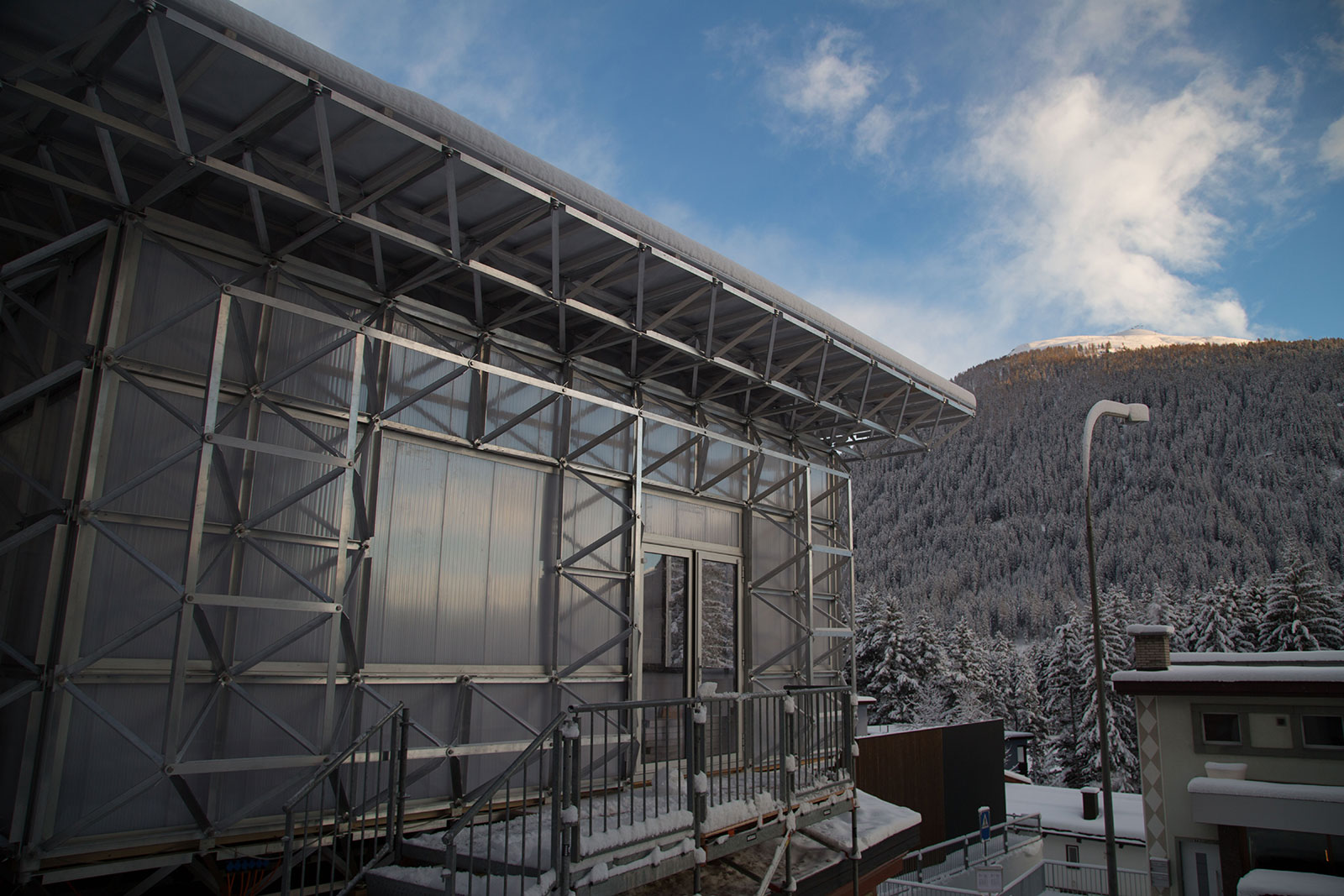
(2) ICEHOUSE
William McDonough + Partners, 2016, archival inkjet print, 20 x 30 inches, © 2016, courtesy of William McDonough + Partners
The work of William McDonough + Partners is grounded in the Cradle to Cradle philosophy developed by McDonough and German chemist Michael Braungart to reframe design as a beneficial, regenerative force. Cradle to Cradle designs seek to embody three principles derived from nature:
- Everything is a resource for something else. For example, buildings can be designed to be disassembled and safely returned to the soil, or re-utilized as high-quality materials for new products and buildings.
- Use renewable energy. Living things thrive on the energy produced by the sun and wind. Similarly, human constructs can utilize renewable energy in its many forms, capitalizing on these abundant resources while supporting human and environmental health.
- Celebrate diversity. The Earth’s systems, adapted to locale, yield an astonishing diversity of natural and cultural life. Designs that respond to the unique challenges and opportunities offered by each place fit elegantly and effectively into their own niches.
Learn more about Cradle to Cradle design in thisone-page summary and thisTED talk by William McDonough.
ICEhouse™ (Innovation for the Circular Economy house) was designed to demonstrate the positive design framework described in the Cradle to Cradle philosophy and the reuse of resources implicit in the circular economy. Learn more about ICEhouse™ in thisone-page summary and zoom into the image for additional interior and exterior views.
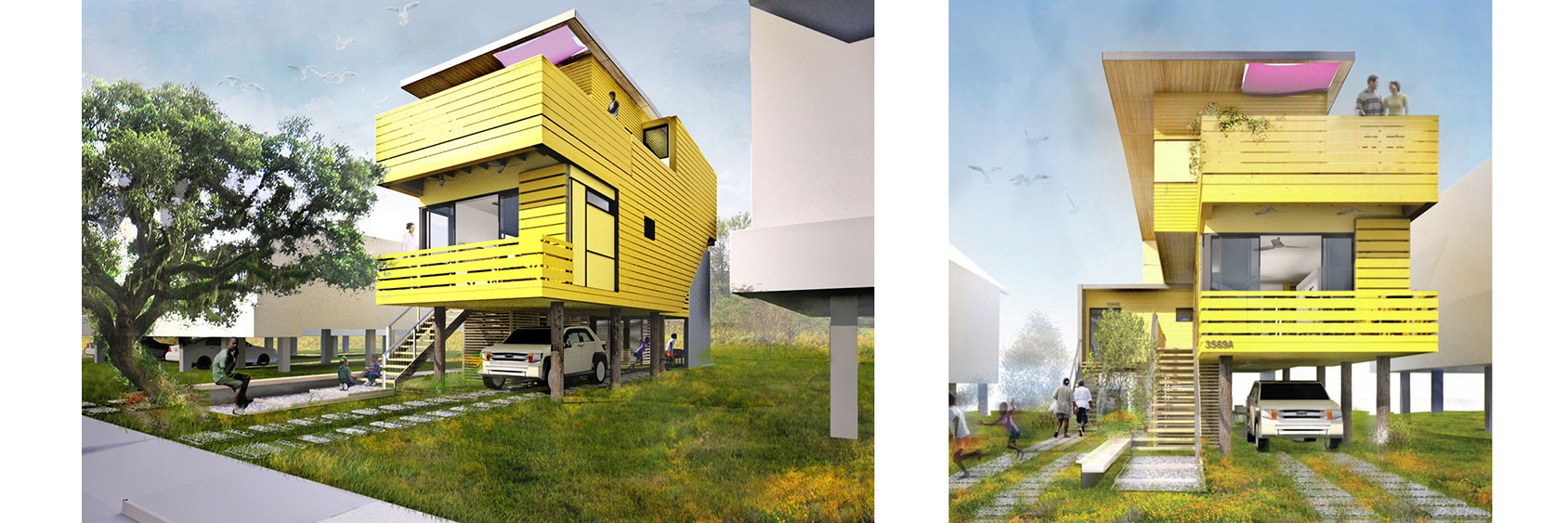
Flow House, New Orleans, Make it Right Foundation
William McDonough + Partners, 2010, archival inkjet print, 20 x 30 inches, © 2010, courtesy of William McDonough + Partners
In response to the devastation caused by Hurricane Katrina, the architectural firm of William McDonough + Partners created innovative housing, working with the Make It Right Foundation in New Orleans, an organization founded by the actor Brad Pitt. Zoom into the image to view a house constructed by Make It Right Homes based on the design of the Flow House.
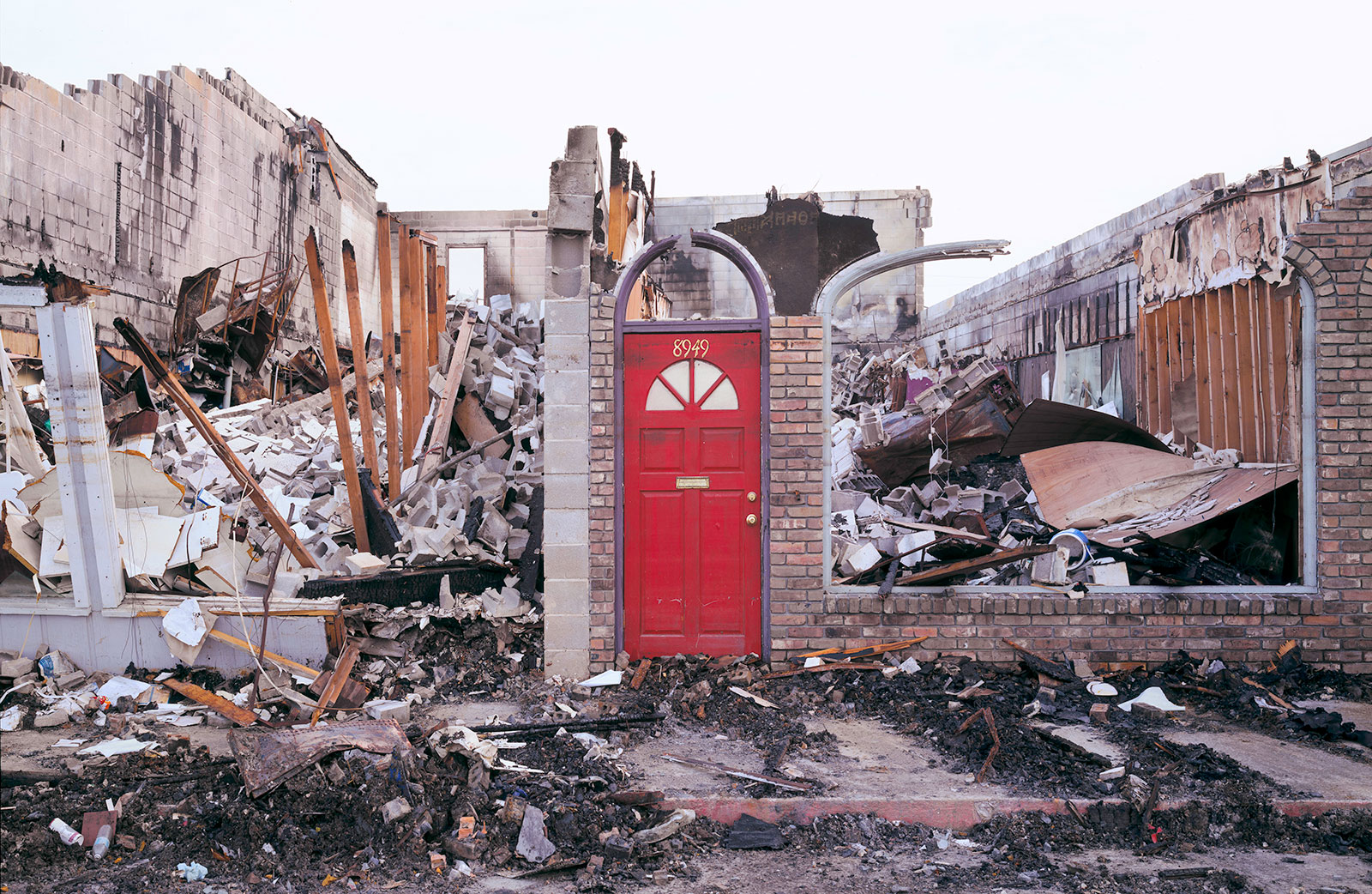
Remains of a business, St. Bernard Parish
Chris Jordan, 2005, photography, 36 x 55 inches, © 2005, courtesy of Chris Jordan
Chris Jordan captures the aftermath of Hurricane Katrina in a body of work entitled “In Katrina’s Wake: Portraits of Loss from an Unnatural Disaster, 2005.” In the series, photographed in New Orleans, Jordan portrays the cost of the storm on a personal scale. Nearly 300,000 Americans lost everything they owned in the disaster, and 1,800 lost their lives.
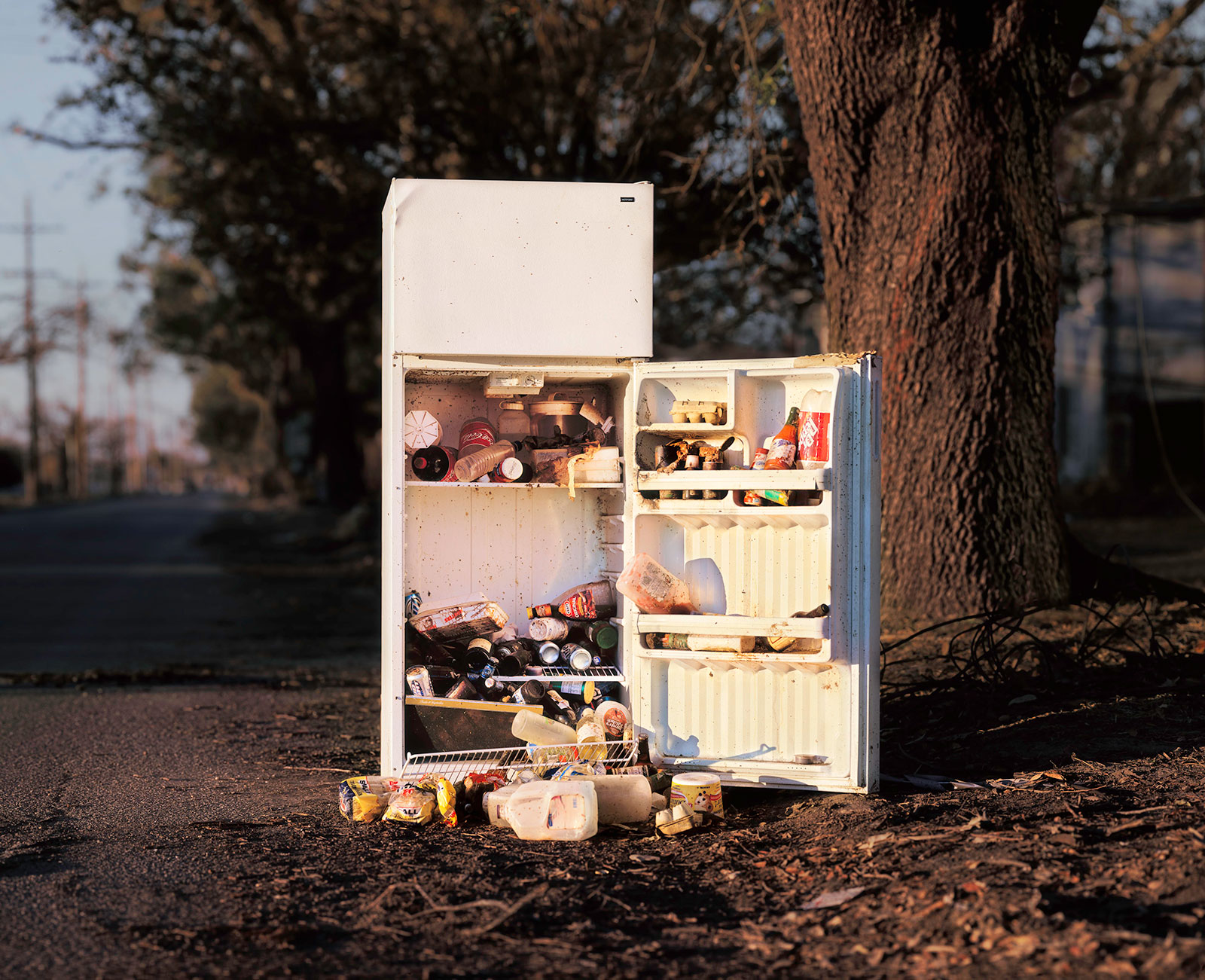
Refrigerator on Franklin Avenue, New Orleans
Chris Jordan, 2005, photography, 36 x 45 inches, © 2005, courtesy of Chris Jordan
Jordan notes that there is evidence to suggest that Katrina was not an entirely natural event like an earthquake or tsunami. The hurricane’s damage was amplified by human causes, including failures of preparedness and response, existing poverty conditions, levee problems mired in local politics, vulnerable natural areas due to poor environmental and wetlands practices, and the conspicuous absence of state and federal support. Katrina illuminated the interconnectedness of people and nature, making our personal accountability as members of a conscious society ever more difficult to deny.
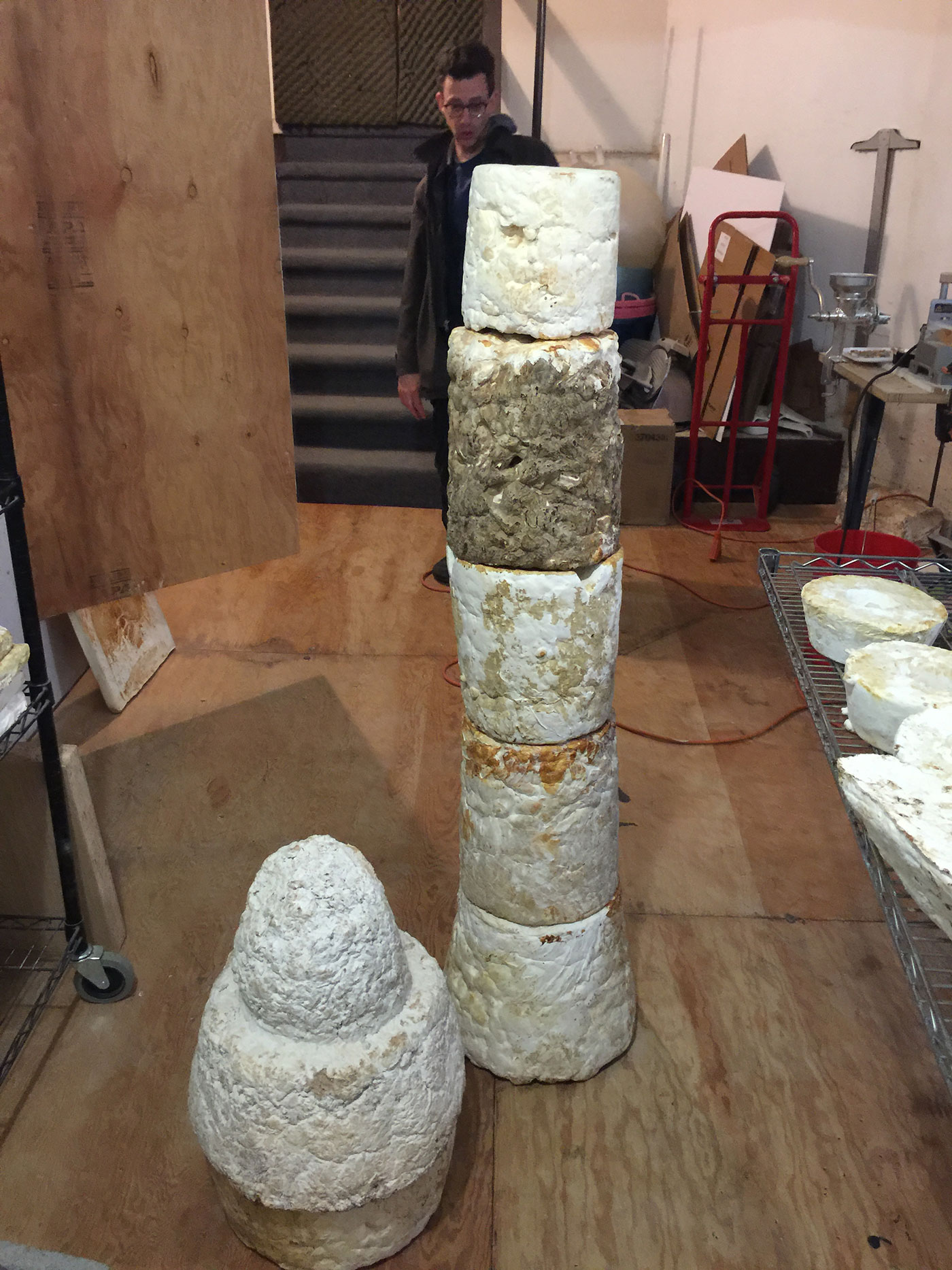
Mycotecture
Phil Ross, 2016, mycelium, 48 x 40 x 40 inches, © 2016, courtesy of Phil Ross
Mycologist Ross uses fungi — ordinary mushrooms — as an innovative building material. Beneath the surface of the ground, fungi form a wide network of thin, root-like fibers called mycelium. When dried, they can be used to form a super-strong, water-, mold-, and fire-resistant building material. The dried mycelium can be grown and formed into any shape, and has a consistency that makes materials stronger, pound for pound, than concrete. The result is an organic and compostable material — an ideal building block for a nature-friendly economy.
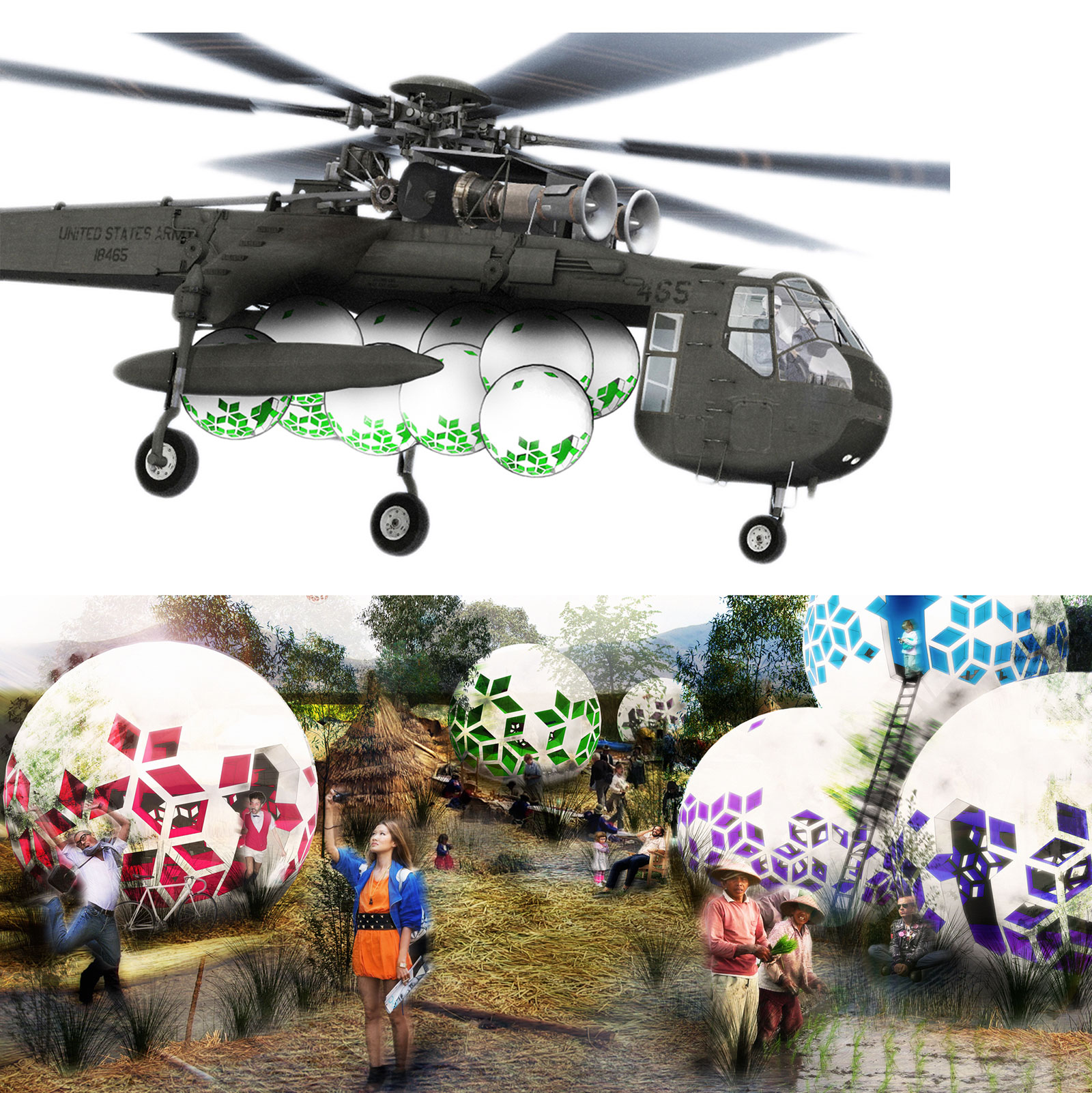
AirDrop House
Andrew Maynard Architects, 2012, ink-jet prints of drawing, dimensions variable, © 2010, courtesy of Andrew Maynard Architects
AirDrop House, envisioned by the Australia-based Andrew Maynard Architects, is a complete emergency shelter housing kit made from a sponge-like material for flood-afflicted areas. Capable of being carried by a standard military aircraft, the one-meter spheres are dropped by air into the water and weighted so they land right-side up, soaking up and filtering polluted flood waters. Once the houses are set, they begin to take root into the ground and can expand up to 7 meters (23 feet) in diameter, drying into a hardened material. Seeds embedded in the foam polymer begin to bud once they hit the silt-rich flood waters, eventually producing plants and trees that can provide shade for the home and a source of food for its inhabitants.

